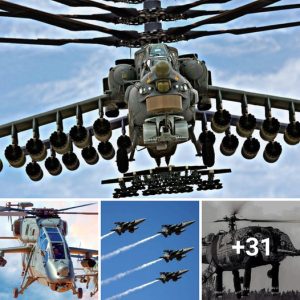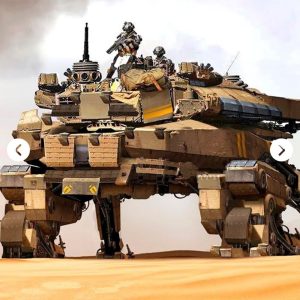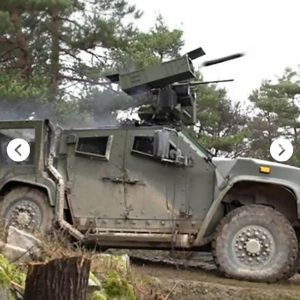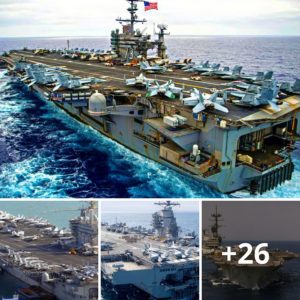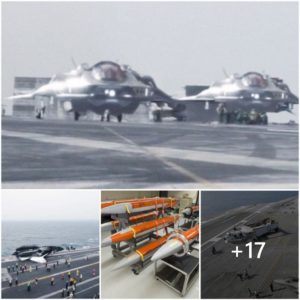The classic image of a capsule landing into the sea, returning to Earth with a team of astronauts from outer space is not only an iconic part of the final hours of a NASA mission but also a spectacle of human scientific achievement. But ever hungry for more advancements, between 1963 and 1975, NASA tried to improve this process by funding a series of experimental wingless aircraft called ‘lifting bodies’ designed to fly rather than crash land back on Earth. One of these was the M2-F3, issued by NASA and built by the main contractor, Northrop.
It would take several arduous years, and one dreadful mishap, for the merits of this new design to be fully realized.
Background
In 1957 the Assistant Director for Research and Development Analysis and Planning at the Ames Aeronautical Laboratory, later renamed the NASA Ames Research Center, conceived a revolutionary idea, building on the foundations of a cutting-edge research project focused on the return of missile cones from space.
Another Ames engineer, Julian Allen, had been trying to solve the tricky problem of reducing aerodynamic heating, which occurred when an object re-entered the atmosphere.
He discovered that a device with a blunt nose was the best way to stop it from being engulfed in flames. At the same time, he also found out that he could achieve lift by slightly modifying the shape of a symmetrical nose cone, illustrating that the craft could be flown back down to earth instead of just falling into the ocean.
Together, Eggers and Allen devised the first prototype, called the M2-F1, designing it so that it could be maneuvered by a pilot in lateral and longitudinal directions.

They were financially aided by Paul Bikle, Director of the Nasa Flight Research Centre, who would allow them to turn the M2-F1 schematics into reality. Like the machine that would soon have its first model built in 1962, Bikle was equally as innovative in the way he secured funding:
“It was a real shoestring operation. We didn’t get any money from anybody. We just built it out of money we were supposed to use to maintain the facility”.
M2-F1 and M2-F2
The M2-F1 was an odd-looking contraption, fitted with a modified half-cone rounded on the bottom and flat on the top, with a nose that was blunt and rounded, and two twin tail fins at the back. The ‘flying bathtub,’ as it was dubbed, was made from a plywood shell that was layered over a steel tubular skeleton.
The M2-F1’s maiden voyage, occurring at Rogers Dry Lake, was also a little unconventional. Being far too experimental to immediately be tested in the air, it was instead dragged along the surface of the vast flats by a supercharged Pontiac convertible traveling at 120 mph, allowing engineers to record some initial flight data.

The next step was to see how it would fare in the skies with a pilot at the helm. For this phase, it was pulled through the air by a NASA R4D tow plane to 12,000 feet and then released, with aviator Milt Thompson performing its first successful landing. Apart from a change in altitude, this was to be the standard flying procedure for all M2 editions thereafter.
The M2-F2 was only a slightly adjusted and heavier version of the M2-F1, weighing 4620 pounds and measuring 22 feet long and 10 feet wide. This time it was pulled along by a modified B-52 and dropped into the sky from its wing pylon mount at an even higher altitude of 45,000 feet.
However, disaster struck during its 16th test-run on May 10th 1967, when it was involved in a landing accident. Bruce Peterson had come into difficulties after the M2-F2 unexpectedly performed a dutch roll, oscillating side to side at over 200 degrees a second. When the shaking stopped, the stunned Peterson was suddenly flying away from his planned flight path and rapidly losing altitude. Because he was too low to reach the assigned landing site, his task now was to touch down at an unmarked portion of the lake.

All of a sudden a rescue helicopter appeared perilously close to the M2-F2, distracting Peterson and forcing him to radio: “Get that chopper out of the way”.
As a result, he activated his landing gear too late, smashing into the lake bed and flipping wildly at over 250 mph across the flat surface. On its final flip, it catapulted 80 feet into the air before coming to rest on its back. Peterson was seriously injured, suffering a fractured skull, horrific facial injuries, a broken hand, and permanent blindness in his right eye. On review, scientists blamed problems with the lateral steering which had caused the craft to careen out of control.
NASA footage of the unfortunate incident was later used in the opening credits for a popular 1970s television show called ‘The Six-Million Dollar Man’. Colonel Steve Austin, the main protagonist, was a bionic man whose body parts had been robotically replaced after a terrible air crash.
Peterson’s brush with death would be broadcast to millions of viewers every week across America for over 6 years.
M2-F3
Learning from their mistakes, the next iteration of the lifting body, the M2-F3, was constructed so that a repeat of Peterson’s close-call could never happen again. The principal difference between the M2-F3 and its previous makes was the addition of a third vertical stabilizer, which added greater control.

To fly the craft, the pilot interacted with an irreversible dual hydraulic control system. To achieve pitch control, the stick was moved longitudinally by the positioning of the lower flap. For roll control, it was moved laterally by engaging the upper flaps, and for yaw control, two rudder pedals were pressed which manipulated two rudder surfaces and two vertical fins on the side.
Two-speed configurations, subsonic and transonic, were added to provide stability for approaching and landing in low drag and at transonic velocities. This worked in combination with a stability augmentation system (SAS) which mechanically intervened if the lifting body overshot or swayed as a result of pilot miscalculation.
The M2-F3 was designed with several new experimental control systems. It included a groundbreaking rate command augmentation system (CAS), which allowed the operator to configure his desired pitch and roll rate electronically using a side-stick. At the time, it was only given 50% authority, with the pilot retaining 50% of the manual control. Nowadays, the same system is permitted 100% control because it’s more effective at flying dynamically unstable aircraft than humans.

It also possessed a reaction jet control system, which up until then had only been used to maneuver orbital spacecraft. Scientists believed that if it worked that it could greatly simplify the designs of conventional aircraft and reduce overall weight.
It was powered by four 90-pound hydrogen peroxide motors that were turned quickly off and on in a pulsed ‘bang-bang’ motion, providing the necessary impulses to change roll and pitch directions mid-flight.
Testing
Commandeered by NASA pilot Bill Dana, who flew 19 out of its 27 missions, the M2-F3’s first flight on June 2nd, 1970 showed that it had superior control and lateral stability in comparison to the wrecked M2-F2. In total, it completed 27 missions, reaching a top speed of 1064 mph (Mach 1.61) on December 13th, 1972, and a height of 71,500 feet on its last flight on December 20th, 1972, its highest recorded altitude. The center stick and SAS systems were only used in the first 13 flights, with the experimental control systems and side-stick levers being evaluated in the last 14.

The first batch of tests went smoothly, and pilots would report on the excellent control afforded to them by the SAS system and how the M2-F3 boasted the lowest lift-to-drag ratio of all the lifting bodies. This could be a problem, however, when landing, where the fastest approaches were the most comfortable.
The M2-F3’s response to turbulence initially made pilots apprehensive to fly, as a side gust of wind could cause exaggerated dihedral. With experience however, pilots became more assured this was just a harmless and unusual side-effect.
Like all pioneering craft, the M2-F3 had its weaknesses. One limitation was the pilot’s lack of visibility caused by the flat upper deck of the nose, which blocked his ability to visibly judge the altitude before touchdown. Moreover, Bill Dana, its first pilot, didn’t like the speed brakes, seeing them as less effective than those of the X-15, which he had flown 15 times.
Dana would also man the first rocket-powered assessments that took place in late 1970. Engineers discovered quickly that the aircraft suffered longitudinal problems at the transonic level, with the angle of attack becoming most uncontrollable at Mach 0.85 velocity because of pitch instability. To fix the issue, pilots ramped up the pitch sensitivity to its maximum setting, but even this only produced marginally acceptable safety results.

Although having great roll and yaw control, the longitudinal problems caused by pitch, which persisted even into the Mach 1.0 and 1.6 range, compelled operators to always activate the SAS system at supersonic speeds.
The CAS system also turned out to be a disappointment. Extensive testing revealed that it did nothing to improve lateral control, only faintly improved longitudinal control and that the side-stick was poorly constructed and had a tendency to instigate both force gradient and breakout force when activated.
At first, the ‘bang-bang’ reaction jet control system seemed equally as doomed. First attempted in roll, it resulted in spasmodic flying deemed too treacherous to even attempt under longitudinal control. However, after being modified slightly, pilots remarked on how responsive the control lever was in initiating two-burst power thrusts. Even better, it didn’t affect the aerodynamic control surfaces at all.
A Close Call
The majority of the flights were safe, apart from one episode in June 1970, when crew member Danny Garabrant spotted a dangerous leak as the M2-F3 was being refueled underneath the wing of a B-52 tow. Due to a fuel valve failure, the contents of the liquid oxygen tank had mixed with the water-alcohol tank.

The liquid oxygen froze the concoction, creating a bomb that could explode at the slightest movement. The area was evacuated and all flights from Edwards Air Force Base were canceled, as the vibrations from a sonic boom had the potential to set it off. After a precarious few hours, the bomb was defused by crew chief Bill LePage and operations engineer Herb Anderson.
Aside from a few scary moments, however, the Northrop M2-F3 project was generally considered a success because of the significant progress it achieved in many areas of aviation technology. Although the CAD had failed, its potential was noted, becoming the basis for the later side-arm controllers that grace most modern aircraft.
In addition, knowledge of wingless craft was an essential building block in the creation of the Space Shuttle orbiters of the 1980s. Elsewhere, reaction jet control systems were particularly beneficial for future aeronautical endeavors and were crucial in the development of the F-104 zoom aircraft, the X-15, and even the Lunar Landing Research Vehicle.
Specifications
- Crew: 1
- Length: 22 ft 2 in (6.76 m)
- Wingspan: 9 ft 8 in (2.95 m)
- Height: 9 ft 6 in (2.90 m)
- Empty weight: 5,071 lb (2,300 kg)
- Max takeoff weight: 7,937 lb (3,600 kg)
- Powerplant: 1 × Reaction Motors XLR-11 liquid-fuelled rocket motor, 8,000 lbf (36 kN) thrust with four combustion chamber/nozzle assemblies
- Maximum speed: 1,064 mph (1,713 km/h)
- Range: 45 mi (72 km)
- Service ceiling: 71,500 ft (21,800 m)
